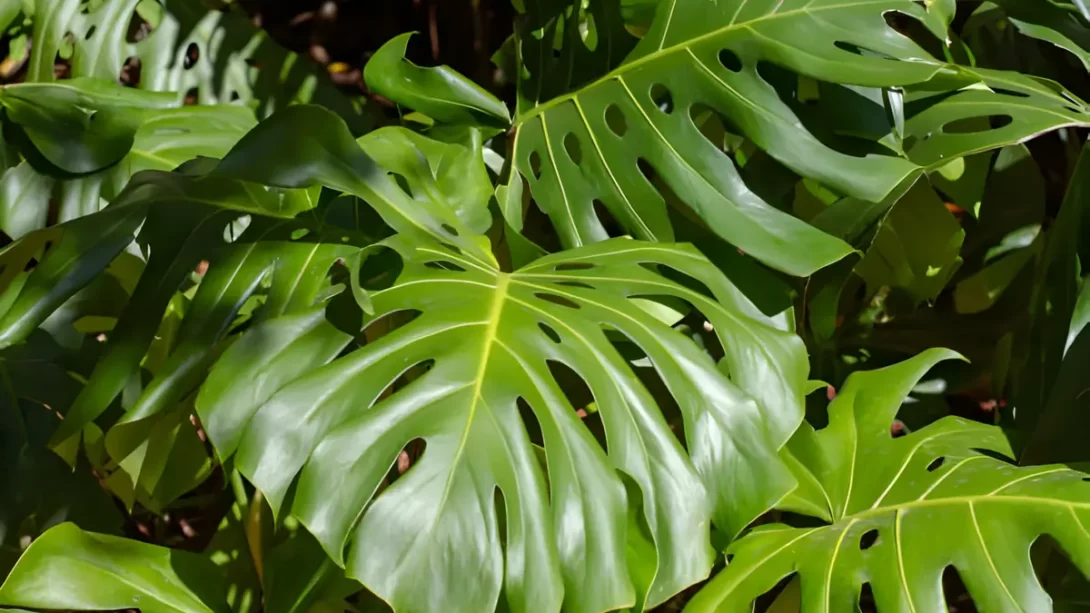The Swiss Cheese Plant, scientifically known as Monstera deliciosa, has become a beloved fixture in many indoor plant collections. Known for its unique, perforated leaves and lush appearance, many plant enthusiasts aspire to cultivate a full, bushy Monstera. However, achieving this aesthetic requires more than just basic care. This article will guide you through the essential steps and considerations to encourage your Swiss Cheese Plant to grow into a beautifully bushy and healthy specimen.
Monstera Growth Habits
Monsteras are naturally vining plants that, in their native tropical environments, climb trees and other structures. Understanding this growth habit is key to cultivating a bushy Monstera. In indoor settings, without proper guidance and support, a Monstera might stretch upwards or become leggy, seeking light and structural support. Recognizing how these plants grow in nature provides valuable insights into optimizing their care in a home environment.
Appropriate Lighting Conditions
Light plays a pivotal role in the health and appearance of a Monstera. These plants prefer bright, indirect light to mimic the dappled sunlight of their natural habitat. Ideal lighting encourages fuller and more vigorous growth. Too little light can lead to sparser leaves and leggy stems, while too much direct sunlight can scorch the leaves. Observe your plant and its response to the light it receives. If you notice slow growth or elongated stems, consider moving it to a brighter location, but away from direct sun exposure.
Proper Watering Techniques
Watering practices significantly impact the growth of Monsteras. They prefer soil that is consistently moist but not waterlogged. Overwatering can lead to root rot and stunted growth, while underwatering can cause the leaves to wilt and the plant to stop growing. To strike the right balance, water your Monstera when the top inch of soil feels dry. Stick to a regular watering schedule, but adjust based on the humidity, temperature, and light conditions in your home. Monitoring the soil moisture is key to providing your plant with the hydration it needs to thrive.
Pruning and Training
Pruning is essential for maintaining a bushy appearance in Monsteras. Regular pruning encourages the plant to develop more side shoots, leading to fuller growth. Prune your plant by cutting just above a leaf node, which is where new growth will emerge. Additionally, training your Monstera with stakes or a moss pole can encourage it to grow more vertically and become fuller. As the plant climbs, it naturally produces larger leaves, contributing to the bushy, lush appearance you desire.
Optimal Fertilization Practices
Fertilization is key to promoting healthy and vigorous growth in your Swiss Cheese Plant. Monsteras benefit from regular feeding, especially during their active growing season in spring and summer. Use a balanced, water-soluble fertilizer once a month to provide essential nutrients. Be cautious not to over-fertilize, as this can lead to salt buildup in the soil and potentially harm the plant. If you notice signs of over-fertilization, such as brown leaf tips or a crust of fertilizer on the soil surface, reduce the frequency or concentration of fertilizer.
Humidity and Temperature Requirements
Monsteras thrive in warm and humid conditions similar to their native tropical environment. Maintaining a room temperature between 65°F and 85°F (18°C to 29°C) is ideal. High humidity levels, around 60% or higher, will support lush, healthy growth. You can increase humidity around your plant by using a humidifier, placing a water-filled pebble tray nearby, or misting the leaves regularly. Avoid placing your Monstera near air vents or drafts, as sudden temperature changes can stress the plant.
Pest Management and Disease Prevention
Keeping your Monstera free from pests and diseases is crucial for maintaining its bushy appearance. Common pests like spider mites, mealybugs, and scale can be managed with regular inspections and prompt treatment using neem oil or insecticidal soap. Keep an eye out for signs of disease, such as yellowing leaves or black spots, which could indicate root rot or fungal infections. Good practices like ensuring proper drainage, avoiding overwatering, and cleaning the leaves regularly can help prevent these issues.
Repotting for Growth
Repotting your Monstera is necessary for continued growth, typically every two years. Choose a pot that is 2-3 inches larger in diameter than the current one to allow for root expansion. Use a well-draining potting mix to promote healthy root development. When repotting, be gentle with the roots to minimize stress and damage. This is also an opportune time to inspect the roots for any signs of rot or disease and trim them if necessary. After repotting, water the plant thoroughly and place it back in its optimal growing conditions.
Additional Care Tips for a Bushy Monstera
- Leaf Cleaning: Regularly wiping the leaves of your Monstera not only keeps the plant looking attractive but also promotes efficient photosynthesis. Clean leaves can absorb more light, which is crucial for healthy growth.
- Rotation: Periodically rotate your Monstera to ensure even growth on all sides. This prevents the plant from leaning towards the light source and promotes a balanced, bushy appearance.
- Observation and Adjustment: Monitor your plant’s response to the care it’s receiving. Be prepared to adjust your approach if you notice signs of stress or poor growth. Understanding your Monstera’s needs and responding to them is key to its overall health and bushiness.
When to Seek Expert Advice
If you encounter persistent issues with your Monstera, such as stunted growth, severe pest infestations, or unexplained leaf loss, it might be time to consult with a plant specialist or horticulturist. They can offer tailored advice and solutions based on their expertise.
Conclusion
Cultivating a bushy Swiss Cheese Plant requires a blend of proper lighting, watering, pruning, and general care. By creating an environment that mimics their natural habitat, providing the right nutrients, and being vigilant about pests and diseases, you can encourage your Monstera to grow lush and full. Remember, plant care is a journey that requires patience and observation. Enjoy the process of nurturing your Monstera, and watch as it transforms into a stunning, bushy centerpiece in your home or garden. Your dedication and attentive care will be rewarded with the spectacular growth of this magnificent plant.



